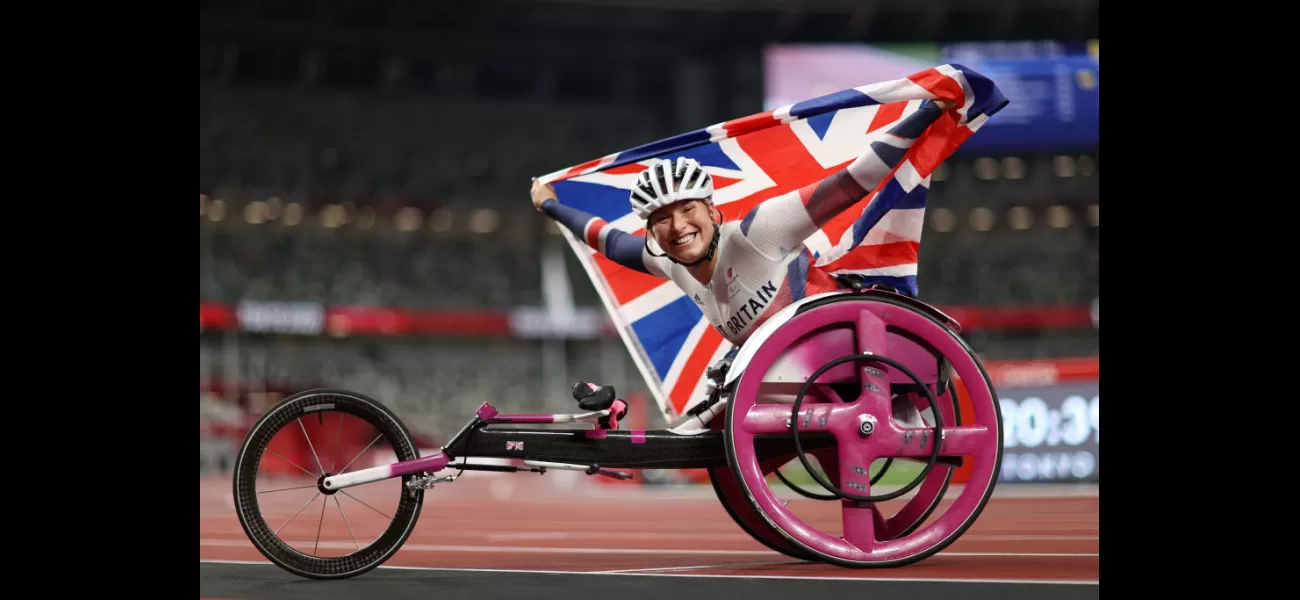The Paralympics have six disability groups, and the C1-C5 classifications determine which group an athlete competes in.
The Paralympic Games have begun.
August 28th 2024.

The Paralympic Games are a source of endless inspiration, with athletes overcoming challenges and pushing boundaries to compete at the highest level. As the games kick off, fans are eagerly anticipating the Paris 2024 Paralympics, hoping to witness the same level of excellence and determination that was displayed at the recent Olympics.
The Paralympics will feature a wide range of sports, from archery and athletics to judo and powerlifting. Team GB boasts a talented and diverse group of athletes, all striving to replicate their impressive performance from three years ago. However, before athletes can compete, they must first meet the eligibility requirements for their specific sport.
Each sport has its own set of classifications, which determine an athlete's eligibility to compete. These classifications are based on ten eligible impairments, including impaired muscle power, limb deficiency, and vision impairment. If an athlete has one or more of these impairments, they can compete as a Paralympian. However, not every sport allows for every disability, and the International Paralympic Committee groups competition into six disability categories.
So, what are these categories? The first is Amputee, which includes athletes with a partial or total loss of at least one limb. The second is Cerebral Palsy, which encompasses non-progressive brain damage that affects muscle control, balance, and coordination. Intellectual Disability is the third category, which includes athletes with significant impairments in intellectual functioning and adaptive behavior.
Wheelchair athletes, including those with spinal cord injuries, make up the fourth category. The fifth category is Visually Impaired, which includes athletes with partial or total blindness. In this category, the athlete and their sighted guide work together as a team and can both win medals. The final category is Les Autres, which includes athletes with physical disabilities that do not fall under the other five categories.
However, these categories are further divided by individual sports. For example, in rowing, there are three classes: PR1, PR2, and PR3. Each class has specific criteria for athletes to meet, such as minimal trunk function or functional use of arms and trunk. Similarly, cycling has its own classification system, including the C1-C5 classes.
Dame Sarah Storey, a renowned Paralympian, competes in the C5 category. The lower the number, the more severe the impairment, with C1 being the most severe. For athletes in the C1 class, their disability significantly impacts their cycling abilities. Other cycling classes include handcycle, tricycle, and tandem.
The Paralympics are a testament to the incredible strength and perseverance of the human spirit. Athletes from all backgrounds and abilities come together to compete at the highest level, inspiring others and breaking down barriers along the way. As we look forward to the Paris 2024 Paralympics, we can expect to witness more incredible stories of determination, resilience, and triumph.
The Paralympics will feature a wide range of sports, from archery and athletics to judo and powerlifting. Team GB boasts a talented and diverse group of athletes, all striving to replicate their impressive performance from three years ago. However, before athletes can compete, they must first meet the eligibility requirements for their specific sport.
Each sport has its own set of classifications, which determine an athlete's eligibility to compete. These classifications are based on ten eligible impairments, including impaired muscle power, limb deficiency, and vision impairment. If an athlete has one or more of these impairments, they can compete as a Paralympian. However, not every sport allows for every disability, and the International Paralympic Committee groups competition into six disability categories.
So, what are these categories? The first is Amputee, which includes athletes with a partial or total loss of at least one limb. The second is Cerebral Palsy, which encompasses non-progressive brain damage that affects muscle control, balance, and coordination. Intellectual Disability is the third category, which includes athletes with significant impairments in intellectual functioning and adaptive behavior.
Wheelchair athletes, including those with spinal cord injuries, make up the fourth category. The fifth category is Visually Impaired, which includes athletes with partial or total blindness. In this category, the athlete and their sighted guide work together as a team and can both win medals. The final category is Les Autres, which includes athletes with physical disabilities that do not fall under the other five categories.
However, these categories are further divided by individual sports. For example, in rowing, there are three classes: PR1, PR2, and PR3. Each class has specific criteria for athletes to meet, such as minimal trunk function or functional use of arms and trunk. Similarly, cycling has its own classification system, including the C1-C5 classes.
Dame Sarah Storey, a renowned Paralympian, competes in the C5 category. The lower the number, the more severe the impairment, with C1 being the most severe. For athletes in the C1 class, their disability significantly impacts their cycling abilities. Other cycling classes include handcycle, tricycle, and tandem.
The Paralympics are a testament to the incredible strength and perseverance of the human spirit. Athletes from all backgrounds and abilities come together to compete at the highest level, inspiring others and breaking down barriers along the way. As we look forward to the Paris 2024 Paralympics, we can expect to witness more incredible stories of determination, resilience, and triumph.
[This article has been trending online recently and has been generated with AI. Your feed is customized.]
[Generative AI is experimental.]
0
0
Submit Comment





